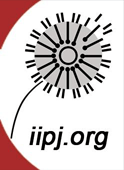Article Title
Scientific Certainty in a Time of Uncertainty: Predicting Vulnerability of Canada's First Nations to Pandemic H1N1/09
Abstract
On June 11, 2009, the Director General of the World Health Organization, Dr. Margaret Chan, announced that the scientific evidence indicated that the criteria for an influenza pandemic had been met: pandemic H1N1/09 virus, the first in nearly 40 years, was officially upon us. The World Health Organization has estimated that as many as 2 billion or between 15 and 45 percent of the population globally will be infected by the H1N1/09 virus. Scientists and governments have been careful to walk a line between causing mass public fear and ensuring people take the risks seriously. The latest information indicates that the majority of individuals infected with the H1N1/09 virus thus far have suffered mild illness, although very severe and fatal illness have been observed in a small number of cases, even in young and healthy people (World Health Organization 2009c). There is no evidence to date that the virus has mutated to a more virulent or lethal form; however, as we enter the second wave of the pandemic, a significant number of people in countries across the world are susceptible to infection. Most importantly, certain subgroups have been categorized as high risk given the clinical evidence to date. One of these subgroups is Indigenous populations (World Health Organization 2009c).
Creative Commons License

This work is licensed under a Creative Commons Attribution-Noncommercial-No Derivative Works 4.0 License.
Recommended Citation
Spence, N.
,
White, J. P.
(2010).
Scientific Certainty in a Time of Uncertainty: Predicting Vulnerability of Canada's First Nations to Pandemic H1N1/09. The International Indigenous Policy Journal, 1(1)
. Retrieved from: https://ir.lib.uwo.ca/iipj/vol1/iss1/1
DOI: 10.18584/iipj.2010.1.1.1
COinS
